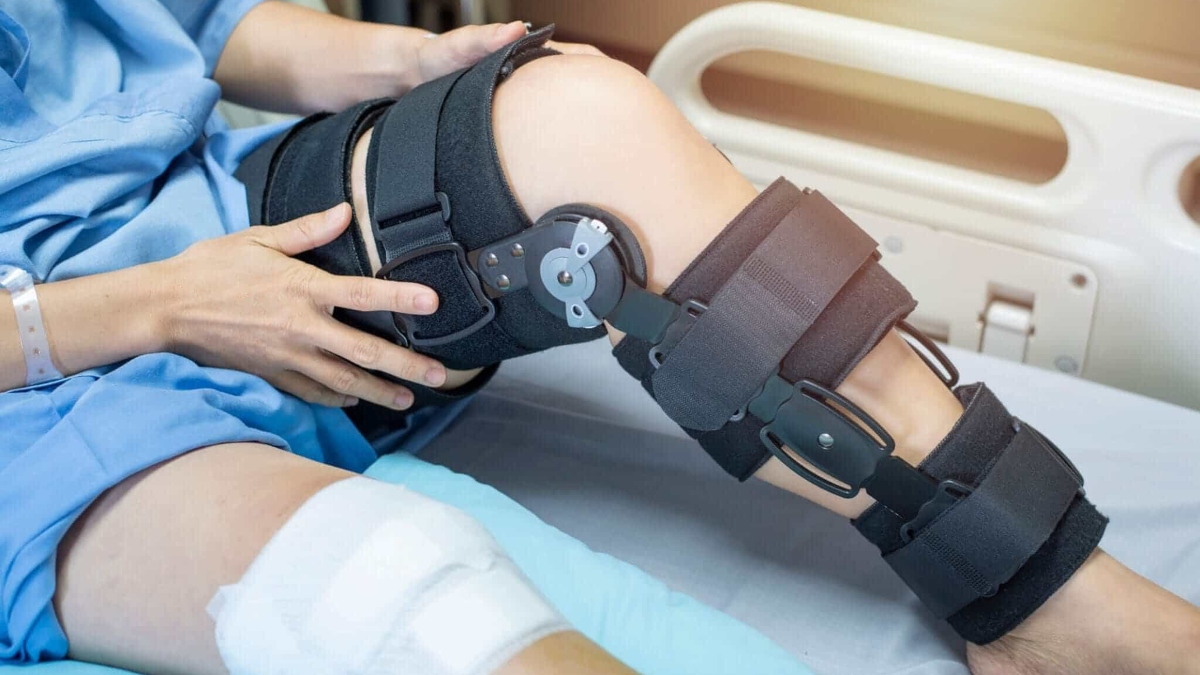


ACL (Anterior cruciate ligament) is one of the main stabiliser ligaments of the knee joint. Injury or tear of the ACL is one of the most common injuries of the knee.
WHEN?
It can occur at any age or in any sport, but generally seen in young people during sports that involve pivoting of the knee like soccer, basketball, hockey and skiing, when sudden stops or changes in direction occur during jumping and landing. It is also a common injury in contact sports such as Kabaddi and Wrestling. The injury can happen to anyone in common activities like jumping across a puddle or if you miss the last step of the stairs in a rush or just simply climbing a stool.
Once torn an ACL can never repair itself. 40% of people can manage their sedentary life with occasional sports without a surgery but if someone wants to run/ jog or play even weekend sports regularly or they experience feeling of giving way (instability) and sense of discomfort then a surgery is recommended to protect the knee from repeated damage and future arthritis.
WHAT HAPPENS?
The ‘pop’ sound of ACL rupture may not be heard in every fresh injury case and we have to look for other common symptoms like:
1- Pain: If you have a minor injury, you may not feel pain. You may feel sore along your knee’s joint line.
2- Swelling: This is most likely to happen in the first 24 hours. You can reduce swelling by putting ice on your knee and elevating (raising) your leg on a stool or 2 pillows.
3- Trouble walking: If you’re not able to put pressure on your hurt knee to walk, climb stairs and walk on uneven ground. Some people find that the knee joint feels loose than it should be.
4- Less range of motion. After you damage your ACL, it’s very likely that you won’t be able to bend your knee like you normally would.
Symptoms in a chronic case: Instability is the most common symptom in an ACL deficient knee in which patient feels that his/her knee will buckle in certain movements/positions of knee especially while playing sports.
WHAT IS IT?
Ligaments are strong bands of tissue that connect one bone to another. The ACL is one of two ligaments inside the knee that cross in the centre and stop undue movement of your thigh bone (femur) on your shin bone (tibia).
WHO IS AT RISK?
1- Being female — possibly due to differences in anatomy, muscle strength and hormonal influences
2- Participating in certain sports, such as soccer, kabbaddi, basketball, gymnastics,
HOW IS IT DIAGNOSED?
-Detailed History: Your doctor will want to hear exactly how you injured your knee. He’ll look at both the knees to see if the sore one looks different.
-Clinical Examination: Your doctor may ask you to lie on your back and bend your hips and/or your knees at certain angles. He’ll then place his hands on different parts of your leg and gently shift the leg around. If any of your bones move in a way that isn’t normal that could be a sign that your ACL is damaged.
-X-ray: Soft tissues like the ACL don’t appear on X-rays, but your doctor may want to rule out broken bones.
-MRI: This exam can show both soft tissue and bone. If you have a damaged ACL, it shows up on the scan.
TREATMENT
Treatment depends on how badly you’ve been hurt.
First is first aid: If your injury is minor, you just put ice on your knee, elevate your leg, and stay off your foot for a while. You can reduce swelling by wrapping a crepe bandage around your knee. Crutches/walker can help you to keep weight off your knee.
Medication: Analgesics and anti-inflammatory drugs help to reduce swelling and pain. Rarely for intense pain and swelling, you may have to get the blood aspirated and get an injection into your knee with a steroid.
Knee brace: Some people with a damaged ACL can get by with wearing a brace on their knee when they run or play sports. It provides extra support. Surgery is done when all else fails and is called Arthroscopic ACL reconstruction in which Surgeon will remove the damaged ACL stump through a keyhole and replace it with a graft sometimes made from the core of your hamstring muscle or a fibre tape.
The writer is Orthopedic and Joint Replacement Surgeon, NHS Hospital, Jalandhar